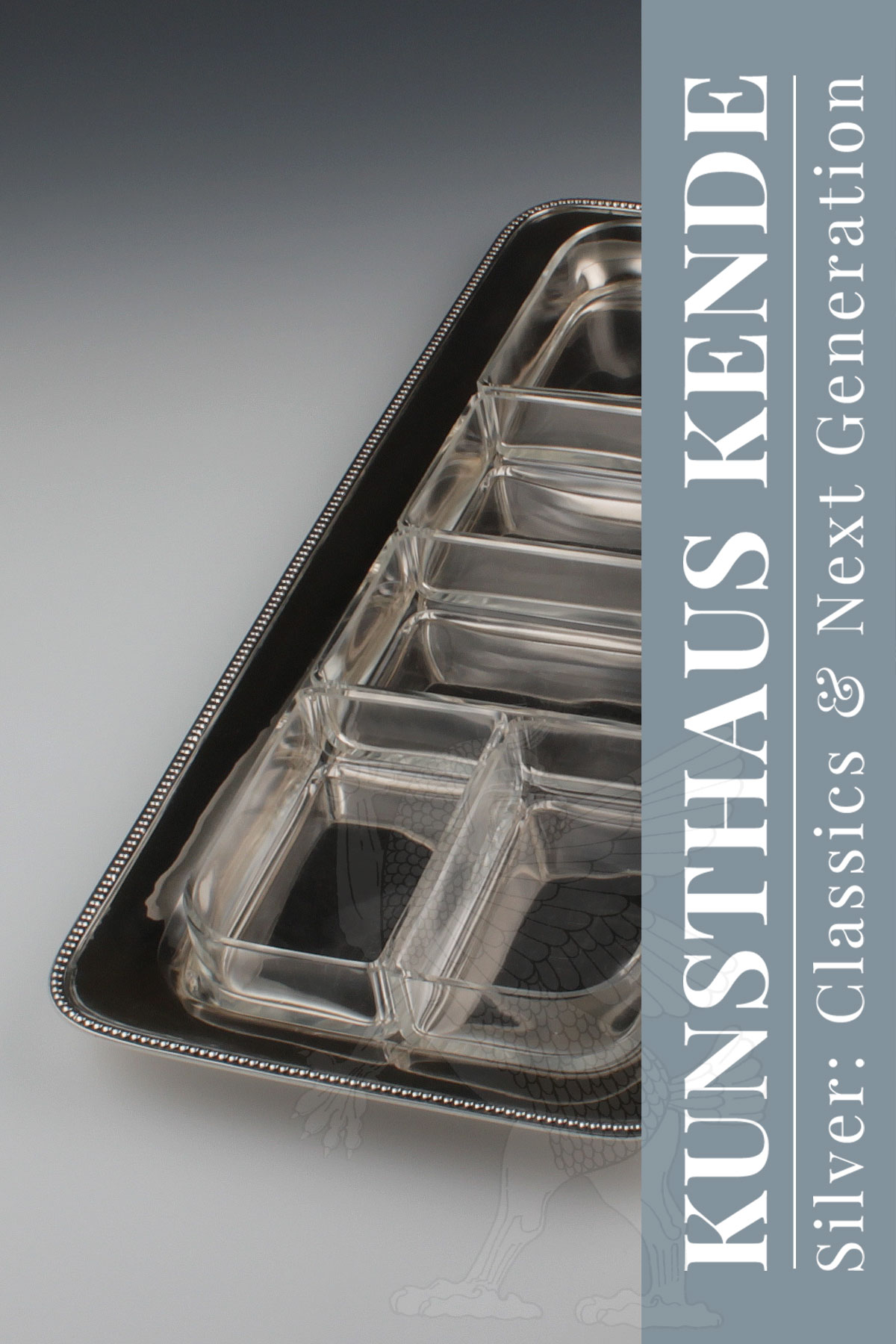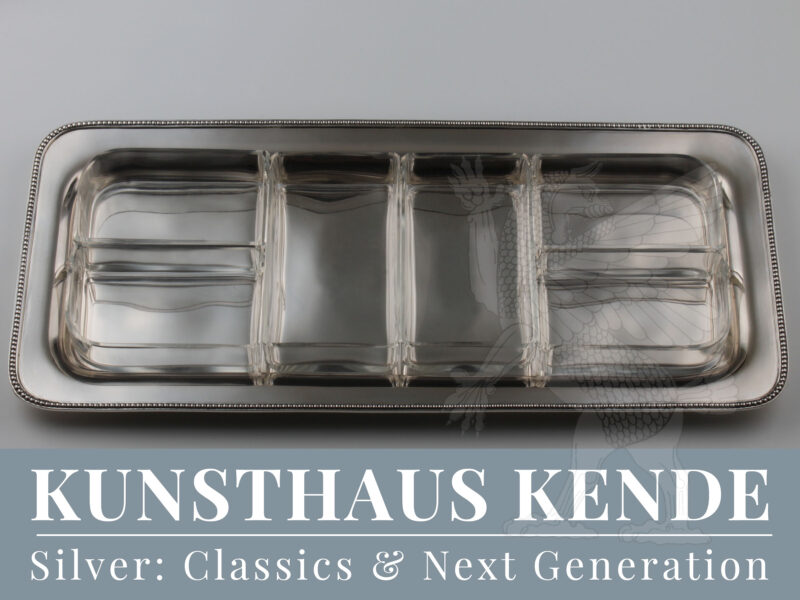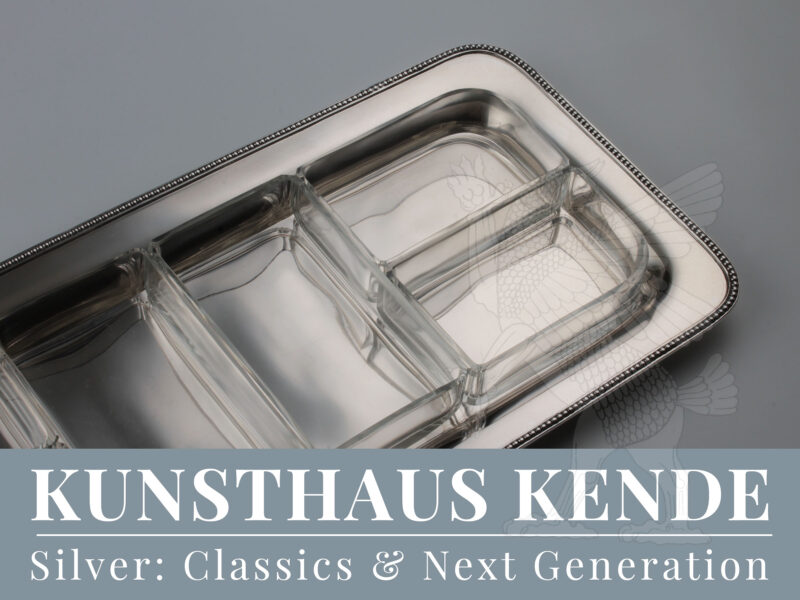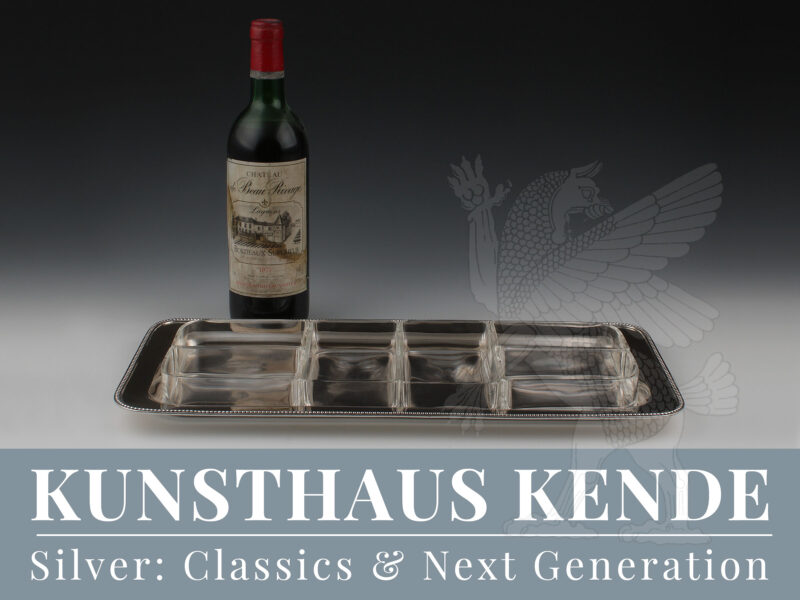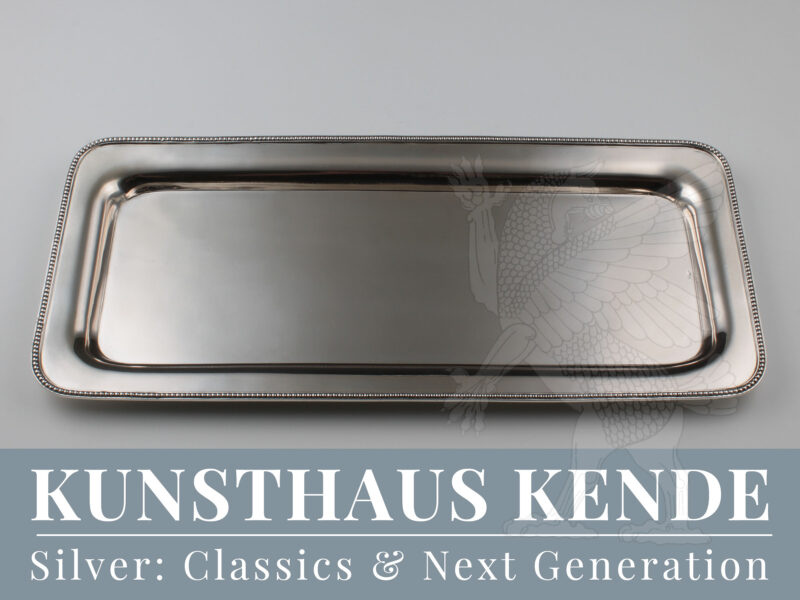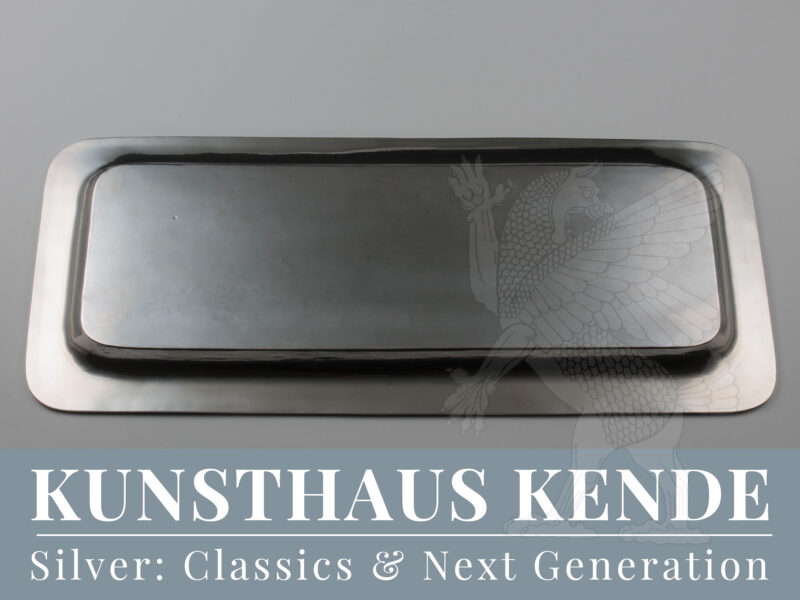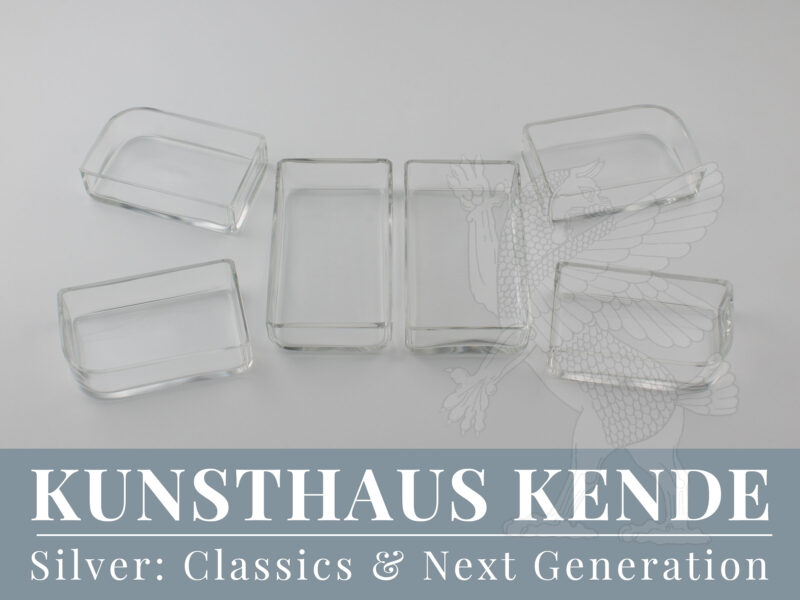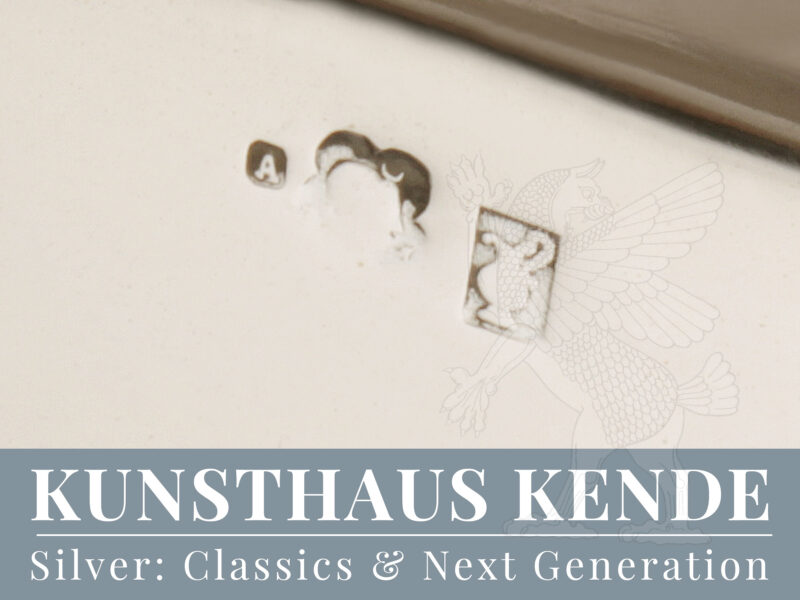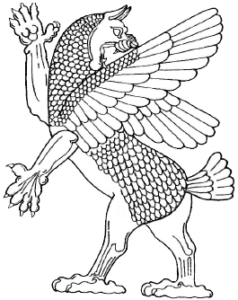Item number: 60145
Large Art Nouveau 800 silver cabaret or offering bowl,
Vienna circa 1900 by Eduard Friedmann
Elongated tray with a smooth rim, finished with a beaded frieze around the outer edge. The original glass inserts in the centre, presumably made of crystal glass with hand-cut corners and edges.
Heavily crafted tray and overall a large work whose high degree of craftsmanship is particularly evident in the slightest irregularities in the glass cutting as well as the traces of the martelé to the underside of the tray. One glass insert is slightly chipped on its outer edge, which is not noticeable during use as this spot is on the outer edge facing the other glass inserts.
45.5 cm / 17.91″ length, 20.9 cm / 8.22″ width; 742.3 g / 23.86 oz
The Viennese Silverware Factory Eduard Friedmann
Founded in 1877, the Eduard Friedmann silverware factory received its trade licence in 1881. The increasing expansion of the company necessitated several relocations, the last of which was to Gumpendorferstrasse 130 in 1903, where it employed 36 workers in 1914. In the same year, the silverware factory was granted the privilege of using the imperial eagle in its shield and seal. Eduard Friedmann quickly achieved fame beyond the country’s borders with his artistically sophisticated designs and high-quality workmanship and the silverware factory exported its work to Germany, Russia, Spain and Italy, among other countries. In addition to Hans Bolek, Eduard Friedmann also executed designs by Otto Prutscher, Emanuel Josef Margold, Milla Weltmann and Alfred Pollak, which brought international attention to the company. The silverware factory also gained further notoriety through regular exhibitions of Austrian decorative arts at the Austrian Museum of Art and Industry (now the Museum of Applied Arts, MAK), as well as the Hunting Exhibition in Vienna (1910). In 1920, the Eduard Friedmann silverware factory was closed.
